Grow Chayote at Home and unlock a world of culinary possibilities right in your backyard! Have you ever dreamt of harvesting your own exotic, versatile vegetable? Well, dream no more! This comprehensive guide will transform you from a gardening novice into a chayote-growing guru.
Chayote, also known as mirliton or vegetable pear, boasts a fascinating history, deeply rooted in Mesoamerican cultures. For centuries, it has been a staple ingredient, cherished for its mild flavor and incredible versatility. From savory stews to refreshing salads, chayote adds a unique touch to countless dishes. But beyond its culinary appeal, growing your own chayote offers a sense of self-sufficiency and connection to nature that’s truly rewarding.
Why should you embark on this chayote-growing adventure? In today’s world, where fresh, locally sourced produce is increasingly valued, grow chayote at home allows you to bypass the grocery store and enjoy the freshest, most flavorful chayote possible. Plus, it’s a fantastic way to reduce your carbon footprint and embrace a more sustainable lifestyle. I’m excited to share these simple, effective DIY tricks and hacks that will ensure a bountiful harvest, even if you have limited space or experience. Let’s get growing!
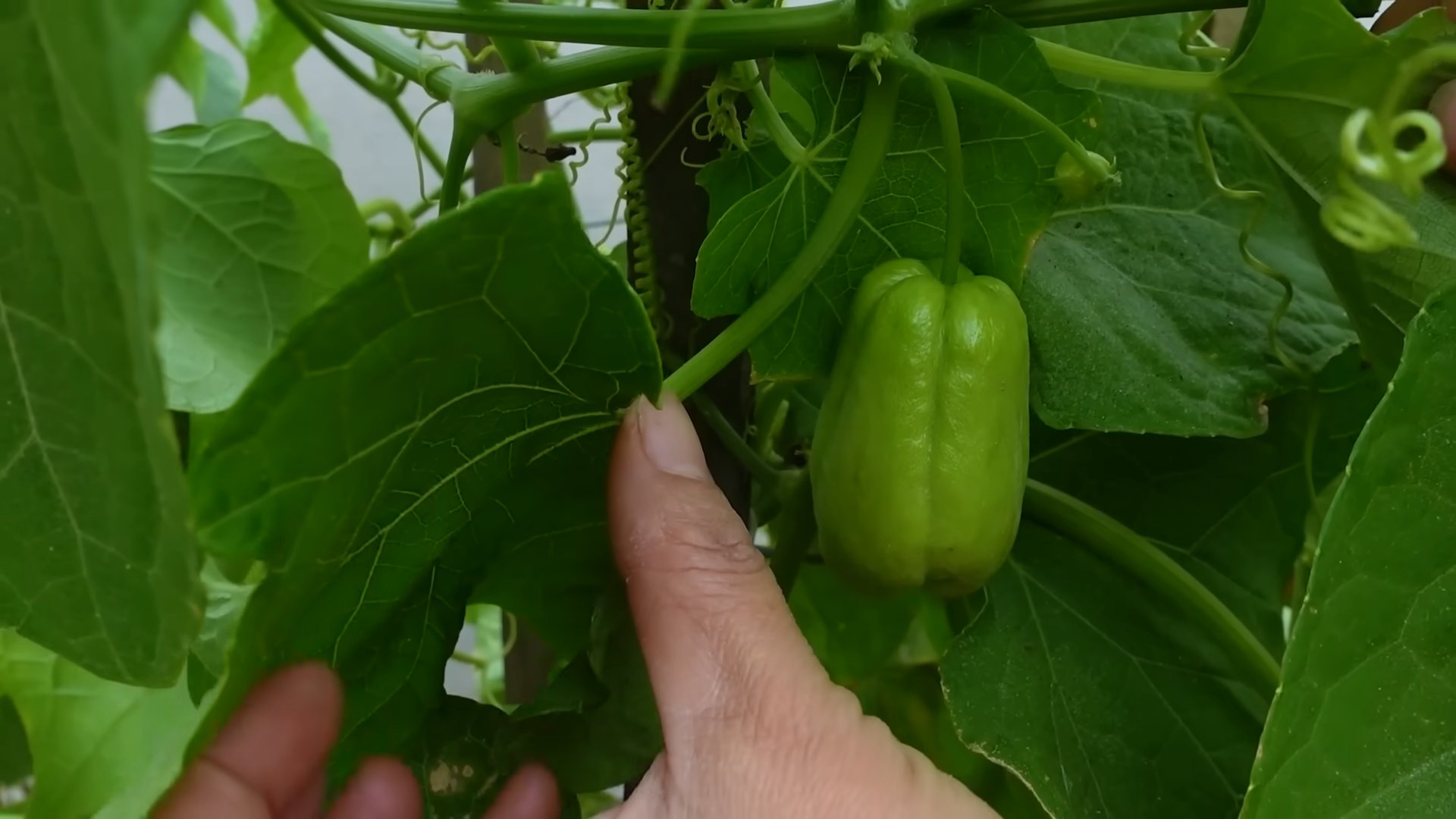
Grow Your Own Chayote Squash: A Beginner’s Guide
Hey there, fellow gardening enthusiasts! Ever heard of chayote? It’s this amazing, pear-shaped squash that’s super versatile in the kitchen. And guess what? You can totally grow it yourself! I’m going to walk you through everything you need to know to cultivate your own chayote vine, from prepping the fruit to harvesting your bounty. Let’s get started!
Understanding Chayote
Before we dive into the nitty-gritty, let’s talk a bit about chayote itself. It’s also known as vegetable pear, mirliton, or christophene, depending on where you are. The entire fruit, including the seed inside, is edible. It has a mild flavor, kind of like a cross between a cucumber and an apple, making it perfect for all sorts of dishes. Plus, the vine, leaves, and even the root are edible too! Talk about a plant that keeps on giving!
Chayote is a tropical perennial vine, but don’t let that scare you if you live in a cooler climate. You can still grow it as an annual. It needs a long growing season, so starting it indoors is often the best bet for those of us with shorter summers.
What You’ll Need
Here’s a list of the supplies you’ll need to get your chayote growing adventure underway:
* **A Mature Chayote Fruit:** This is the most crucial part! Look for a healthy, mature fruit from a grocery store or farmer’s market. It should be free of blemishes and starting to sprout.
* **A Large Pot (at least 5 gallons):** Chayote vines are vigorous growers, so they need plenty of space for their roots.
* **Well-Draining Potting Mix:** A good quality potting mix is essential for healthy growth.
* **A Sunny Location:** Chayote loves sunshine! Aim for at least 6-8 hours of direct sunlight per day.
* **A Trellis or Support Structure:** These vines can get HUGE, so you’ll need something for them to climb on. A sturdy trellis, fence, or even a pergola will work.
* **Watering Can or Hose:** For keeping your chayote plant hydrated.
* **Fertilizer (Optional):** A balanced fertilizer can help boost growth, but it’s not strictly necessary.
* **Gardening Gloves:** To protect your hands.
Sprouting Your Chayote Fruit
The unique thing about chayote is that you plant the whole fruit! Here’s how to get it started:
1. **Inspect Your Chayote:** Carefully examine your chayote fruit. You’re looking for signs of sprouting. Sometimes, you’ll see a small shoot emerging from the broader end of the fruit. If not, don’t worry! It will sprout eventually.
2. **Prepare the Pot:** Fill your large pot with well-draining potting mix, leaving a few inches of space at the top.
3. **Plant the Chayote:** Place the chayote fruit horizontally on top of the soil. Gently press it down so that about half of the fruit is buried in the soil. The sprouting end (if there is one) should be facing upwards.
4. **Water Thoroughly:** Water the pot well until the soil is evenly moist.
5. **Provide Warmth and Light:** Place the pot in a warm, sunny location. If you’re starting it indoors, a sunny windowsill or under grow lights is ideal.
6. **Keep it Moist:** Keep the soil consistently moist, but not waterlogged. Check the soil moisture regularly and water when the top inch feels dry.
7. **Be Patient:** It can take several weeks, or even a couple of months, for the chayote to sprout and start growing. Don’t give up!
Transplanting Your Chayote Seedling
Once your chayote seedling has developed a few leaves and a strong root system, it’s time to transplant it to its permanent location.
1. **Choose a Sunny Spot:** Select a location in your garden that receives at least 6-8 hours of direct sunlight per day.
2. **Prepare the Soil:** Chayote prefers well-draining soil that is rich in organic matter. Amend the soil with compost or well-rotted manure before planting.
3. **Dig a Hole:** Dig a hole that is slightly larger than the pot your chayote seedling is currently in.
4. **Carefully Remove the Seedling:** Gently remove the chayote seedling from its pot, being careful not to damage the roots.
5. **Plant the Seedling:** Place the seedling in the hole and backfill with soil. Gently firm the soil around the base of the plant.
6. **Water Thoroughly:** Water the newly transplanted seedling well.
7. **Provide Support:** Immediately provide a trellis, fence, or other support structure for the vine to climb on.
Caring for Your Chayote Vine
Now that your chayote vine is planted, here’s how to keep it happy and healthy:
* **Watering:** Water regularly, especially during dry periods. Chayote needs consistent moisture to thrive. Aim for about 1-2 inches of water per week.
* **Fertilizing:** Fertilize your chayote vine every few weeks with a balanced fertilizer. Follow the instructions on the fertilizer package. You can also side-dress with compost or well-rotted manure.
* **Pruning:** Prune your chayote vine to encourage branching and fruit production. Remove any dead or diseased leaves and stems. You can also trim back the vine to keep it from getting too unruly.
* **Pest and Disease Control:** Keep an eye out for pests and diseases. Common pests that affect chayote include aphids, squash bugs, and vine borers. Diseases can include powdery mildew and fungal infections. Treat any problems promptly with appropriate organic pest control methods or fungicides.
* **Mulching:** Apply a layer of mulch around the base of the plant to help retain moisture, suppress weeds, and regulate soil temperature.
Harvesting Your Chayote Squash
The moment you’ve been waiting for! Here’s how to harvest your delicious chayote squash:
1. **Timing is Key:** Chayote squash is typically ready to harvest about 4-6 weeks after flowering. The fruits should be firm and smooth, with a light green color.
2. **Check the Size:** The ideal size for harvesting chayote is about 4-6 inches long.
3. **Harvest Carefully:** Use a sharp knife or pruners to cut the fruit from the vine, leaving a short stem attached.
4. **Handle with Care:** Chayote squash is delicate and can bruise easily, so handle it with care.
5. **Store Properly:** Store your harvested chayote squash in a cool, dry place. They should keep for several weeks.
Using Your Chayote Harvest
Now for the fun part: cooking with your homegrown chayote! Here are just a few ideas:
* **Sautéed Chayote:** Slice the chayote and sauté it with garlic, onions, and your favorite herbs.
* **Chayote Soup:** Add diced chayote to your favorite soup recipe.
* **Stuffed Chayote:** Hollow out the chayote and stuff it with meat, vegetables, or rice.
* **Pickled Chayote:** Pickle chayote for a tangy and refreshing treat.
* **Chayote Salad:** Grate raw chayote and add it to salads for a crunchy texture.
* **Chayote Fries:** Cut chayote into strips and bake or fry them for a healthy alternative to potato fries.
The possibilities are endless! Experiment with different recipes and find your favorite ways to enjoy this versatile squash.
Troubleshooting
Even with the best care, you might encounter some challenges along the way. Here are a few common problems and how to address them:
* **No Fruit Production:** If your chayote vine is growing well but not producing fruit, it could be due to a lack of pollination. Chayote flowers are pollinated by insects, so make sure there are plenty of pollinators in your garden. You can also try hand-pollinating the flowers yourself.
* **Yellowing Leaves:** Yellowing leaves can be a sign of overwatering, underwatering, or nutrient deficiency. Check the soil moisture and adjust your watering schedule accordingly. Fertilize your vine with a balanced fertilizer to provide the necessary nutrients.
* **Pest Infestations:** If you notice pests on your chayote vine, treat them promptly with appropriate organic pest control methods.
* **Disease Problems:** If you see signs of disease, such as powdery mildew or fungal infections, treat them with appropriate fungicides.
Saving Seeds (Technically, the Fruit!)
Since you plant the whole fruit, saving seeds is as simple as saving a mature chayote! Just let a few fruits mature fully on the vine and store them in a cool, dry place until you’re ready to plant them next season.
Final Thoughts
Growing chayote squash is a rewarding experience. It’s a unique and versatile vegetable that you can
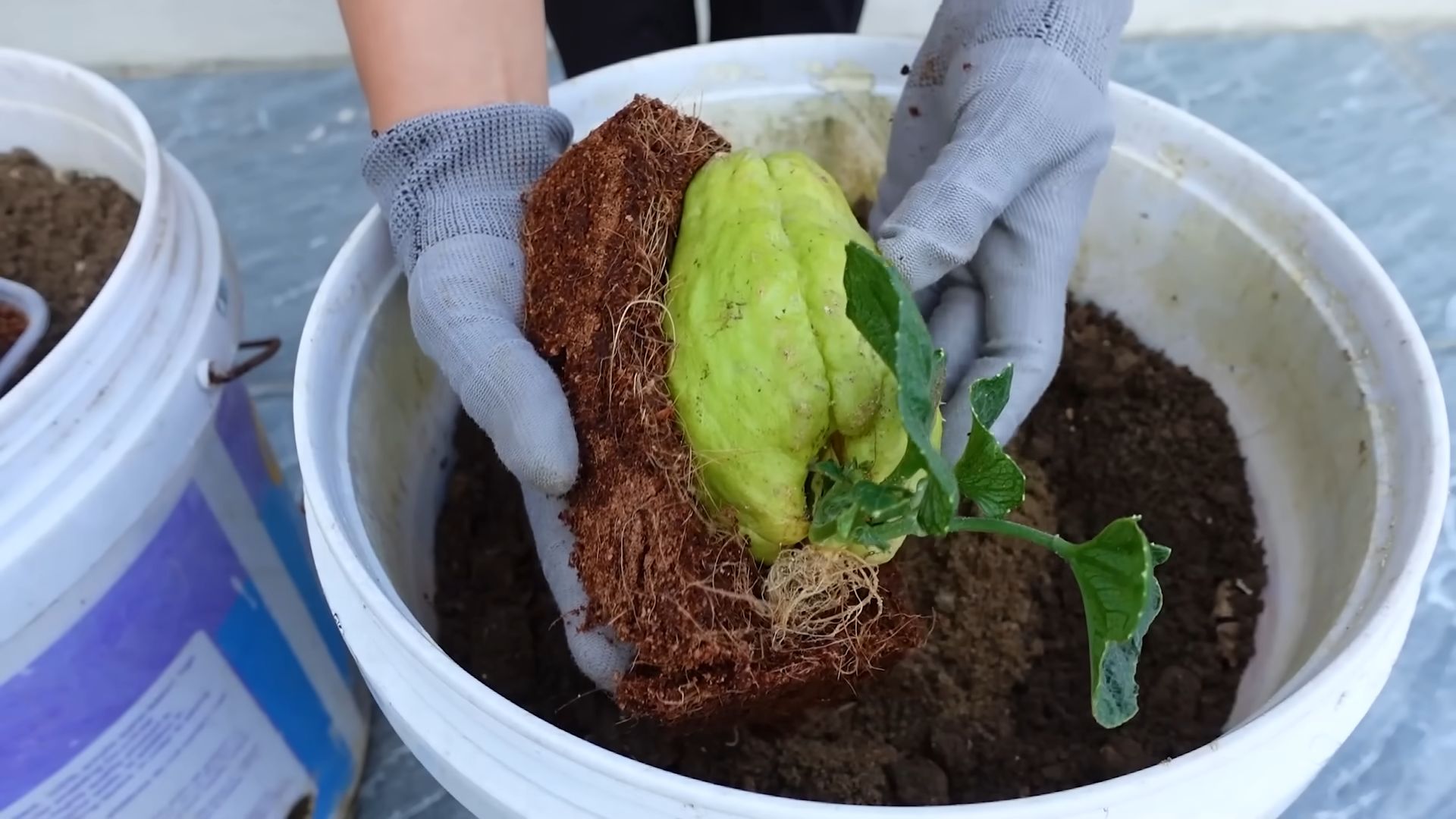
Conclusion
So, there you have it! Growing chayote at home is not only achievable, but it’s a rewarding experience that brings fresh, delicious produce right to your kitchen. Forget relying solely on grocery stores for this unique squash; with a little patience and the right techniques, you can cultivate your own thriving chayote vine.
Why is this DIY trick a must-try? Because it empowers you to control the quality and freshness of your food. Imagine the satisfaction of harvesting your own chayote, knowing exactly where it came from and how it was grown. Plus, it’s a fantastic way to reduce your carbon footprint by minimizing transportation and supporting sustainable practices.
Beyond the basic method outlined, there are several exciting variations you can explore. Consider experimenting with different soil types to see which yields the best results in your specific climate. You might also try training your chayote vine to grow on a trellis or pergola, creating a beautiful and functional addition to your garden. For those in colder climates, starting the sprouting process indoors before transplanting outdoors can significantly increase your chances of success. Another variation is to try different varieties of chayote. While the common green variety is widely available, you might be able to find white or even spiny chayote varieties to add diversity to your harvest.
Don’t be intimidated by the process! While it may seem daunting at first, growing chayote at home is surprisingly straightforward once you understand the basic principles. The key is to provide the right conditions – ample sunlight, well-drained soil, and a sturdy support structure for the vine to climb. Remember to be patient, as it can take several weeks for the chayote to sprout and begin to grow.
We are confident that you’ll find this DIY project both enjoyable and fruitful. The taste of homegrown chayote is simply unmatched, and the satisfaction of nurturing a plant from seed to harvest is incredibly rewarding.
Now, it’s your turn! We encourage you to give this DIY trick a try and experience the joy of growing chayote at home. Don’t be afraid to experiment and adapt the techniques to suit your specific environment and preferences. Most importantly, have fun with it!
Once you’ve embarked on your chayote-growing adventure, we’d love to hear about your experience. Share your tips, tricks, and successes (and even your challenges!) in the comments below. Your insights could help other aspiring chayote growers and contribute to a thriving community of home gardeners. Let’s all learn and grow together! We are especially interested in hearing about your experiences with different sprouting methods and vine training techniques. Did you find that one method worked better than another? What kind of support structure did you use for your vine? Your feedback is invaluable!
So, grab a chayote, get your hands dirty, and start growing! You’ll be amazed at what you can achieve with a little effort and a lot of enthusiasm. Happy gardening!
Frequently Asked Questions (FAQ)
What exactly is chayote, and what does it taste like?
Chayote (Sechium edule) is a type of squash that belongs to the gourd family. It’s often described as having a mild, slightly sweet flavor, similar to a blend of cucumber and apple. Its texture is crisp and refreshing, making it a versatile ingredient in various dishes. The entire fruit, including the seed, is edible when young. As it matures, the skin can become tougher, but it’s still perfectly usable after peeling.
How long does it take for a chayote to sprout?
The sprouting time for chayote can vary depending on several factors, including temperature, humidity, and the freshness of the fruit. Generally, it can take anywhere from 3 to 6 weeks for a chayote to sprout. Maintaining consistent moisture and warmth is crucial during this period. Some gardeners have reported faster sprouting times by using a heat mat or placing the chayote in a warm, sunny location.
What kind of soil is best for growing chayote?
Chayote thrives in well-drained soil that is rich in organic matter. A loamy soil is ideal, as it provides a good balance of drainage and water retention. Before planting, amend the soil with compost or well-rotted manure to improve its fertility and drainage. Avoid heavy clay soils, as they can become waterlogged and hinder root development. If you have clay soil, consider adding sand and organic matter to improve its structure.
How much sunlight does chayote need?
Chayote vines require at least 6-8 hours of direct sunlight per day to thrive. Choose a planting location that receives ample sunlight throughout the day. Insufficient sunlight can result in weak growth, reduced fruit production, and increased susceptibility to diseases. If you live in a particularly hot climate, providing some afternoon shade can help prevent the leaves from scorching.
What kind of support structure does chayote need?
Chayote is a vigorous vine that needs a strong support structure to climb on. A trellis, pergola, fence, or even a sturdy tree can serve as a suitable support. The structure should be able to withstand the weight of the mature vine and its fruits. Ensure that the support is tall enough to accommodate the vine’s growth, which can reach up to 30 feet in length. Regularly prune the vine to manage its size and prevent it from becoming too heavy for the support.
How often should I water my chayote plant?
Water your chayote plant regularly, especially during dry periods. The soil should be kept consistently moist but not waterlogged. Water deeply at the base of the plant, avoiding wetting the foliage, which can increase the risk of fungal diseases. Mulching around the base of the plant can help retain moisture and suppress weeds. During hot weather, you may need to water more frequently.
When is the best time to harvest chayote?
Chayote is typically ready to harvest about 4-6 weeks after the fruit sets. The fruits should be firm and smooth, with a light green color. Harvest them when they are still relatively young and tender, as they can become tougher and less flavorful as they mature. Use a sharp knife or pruning shears to cut the fruit from the vine, leaving a short stem attached. Regular harvesting encourages the plant to produce more fruits.
Can I grow chayote in a container?
While chayote is best grown in the ground, it is possible to grow it in a large container. Choose a container that is at least 20 gallons in size and has good drainage holes. Use a high-quality potting mix that is rich in organic matter. Provide a sturdy trellis or support structure for the vine to climb on. Container-grown chayote may require more frequent watering and fertilization than plants grown in the ground.
Are there any common pests or diseases that affect chayote?
Chayote is generally resistant to pests and diseases, but it can be susceptible to certain problems, such as aphids, squash bugs, and powdery mildew. Regularly inspect your plants for signs of infestation or disease. Treat any problems promptly with appropriate organic pesticides or fungicides. Good air circulation and proper watering practices can help prevent many common diseases.
How do I store chayote after harvesting?
Chayote can be stored in the refrigerator for several weeks. Place the fruits in a plastic bag or container to prevent them from drying out. Avoid storing them near ethylene-producing fruits, such as apples and bananas, as this can cause them to ripen too quickly. Chayote can also be frozen for longer storage. Blanch the fruits in boiling water for a few minutes before freezing to preserve their quality.

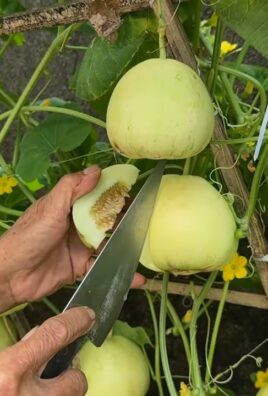
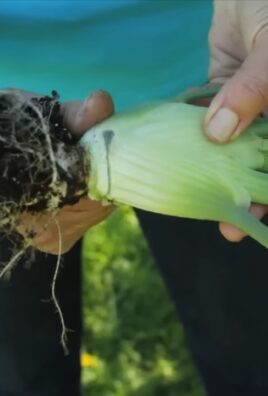
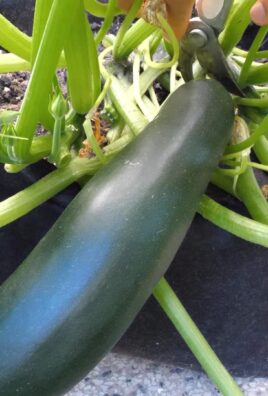
Leave a Comment